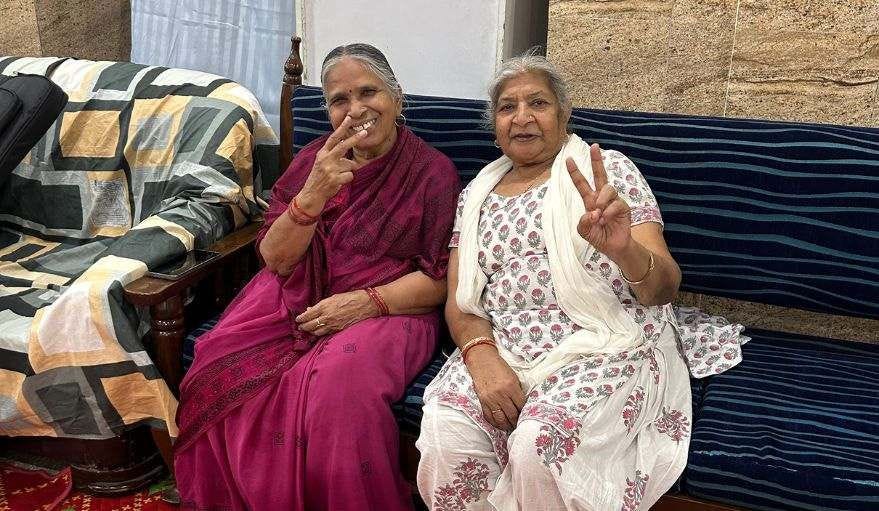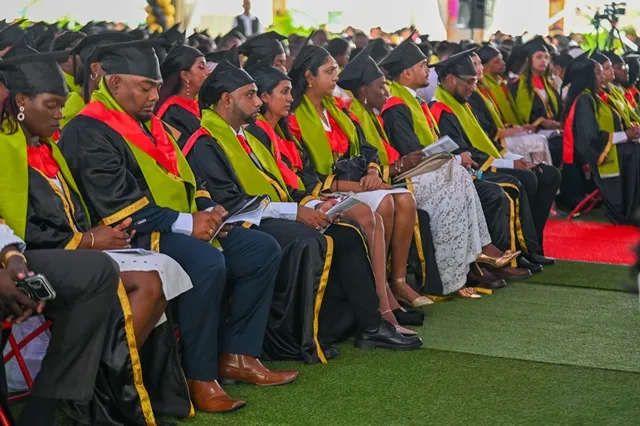Government cash-transfer programme nears completion, injecting billions into households across all regions
GEORGETOWN – The vast majority of Guyanese households have now benefited from a one-time G$100,000 (US$480) cash grant as the government’s nationwide relief programme hits its final stage. Senior Finance Minister Dr. Ashni Singh announced this week that 96% of all registered citizens have received their grant checks, delivering a timely boost to families grappling with higher living costs. The cash-transfer initiative – one of the largest social assistance efforts in Guyana’s history – has pumped over G$60 billion (US$290 million) directly into communities since its rollout late last year.
As of May 21, 617,398 people had registered for the “Because We Care” grant, equivalent to roughly 80% of the country’s adult population. Of these, 602,927 beneficiaries have already been issued cheques, according to official data. Distribution teams from the Ministry of Human Services and regional authorities fanned out across all 10 regions – from the capital Georgetown’s urban wards to remote hinterland villages – to hand deliver the relief funds. In many interior communities, makeshift payout centers were set up at schools and community halls, with helicopters and boats used to reach riverine and indigenous settlements.
“No one must be left behind,” President Irfaan Ali said, underscoring that the cash grant is meant to cushion vulnerable groups nationwide. The G$100,000 grant (per person above age 18, or per household in some cases) was a central promise of Ali’s PPP/C government to share the benefits of Guyana’s oil wealth more broadly. With oil revenues surging, the administration has rapidly scaled up cash transfers as a form of direct economic empowerment.
Ordinary Guyanese are feeling the impact. “This money helped me fix my roof and buy school supplies for my children,” said a single mother of three in Berbice, who received her cheque in April. In Essequibo, a rice farmer used the grant to purchase fuel and fertilizer for the planting season, easing his production costs. Many families said they spent the funds on food stockpiles, home repairs, medical bills, or paying off small debts – providing relief amid imported inflation on fuel and staples. Local shopkeepers have reported a bump in sales in villages shortly after grant distribution dates, reflecting a mini stimulus effect in rural economies.
Dr. Singh noted that by the end of June, an estimated 12,000 additional people will be registered and paid, bringing the program to full coverage. Officials conducted mop-up registration drives in late May for anyone who missed earlier rounds – particularly targeting outlying areas and ensuring documentation issues (like lost ID cards) did not bar access. The process has not been without hitches: there were initial reports of long lines at some distribution sites and confusion over whether some categories (e.g. migrant residents, or multiple families at one address) qualified. The government clarified rules and even made home visits to bedridden elderly recipients to deliver their grant. “We bent over backwards to make sure everyone eligible got their due,” one regional officer said.
The opposition had at times criticized the cash transfer scheme as a possible election ploy or unsustainable handout. However, they ultimately supported the needed supplementary budget allocations in Parliament to fund it, given popular demand (the G$100k grants were financed through a portion of Guyana’s Natural Resource Fund withdrawals. Economists have generally welcomed the initiative, noting that with inflation under 3%, the injection is not overheating the economy but rather alleviating inequality. The International Monetary Fund, in its recent review, commended the authorities’ balancing of development needs with prudent policies – implicitly approving of targeted social spending like the cash grant while maintaining overall fiscal stability .
This cash-transfer effort is part of a broader push by the PPP/C government to ensure the country’s burgeoning oil wealth tangibly improves citizens’ lives. In addition to the universal $100k grant, the 2025 budget includes expanded scholarship programs, salary hikes for public servants, and new subsidies for electricity and water. For example, the GOAL scholarship scheme has already awarded over 20,000 online university scholarships since 2021, far exceeding its initial target . And a separate “Because We Care” cash grant of G$30,000 per child for school supplies was reintroduced and increased this year. These measures, the government argues, are investments in human capital and poverty reduction made possible by oil revenues.
Officials highlight that the one-off $100k grants have had an outsized impact in hinterland and indigenous communities, many of which are cash-poor. An indigenous village councilor from Region 9 lauded the program: “For some families in our village, 100,000 [dollars] is more money than they see at one time all year. This allows them to buy a solar panel or a new boat engine – things that uplift their livelihood.” In Region 1 (Barima-Waini), turnout was nearly universal when distribution teams arrived, given the relative remoteness and need.
The Ali administration has not indicated if this $100k grant will be repeated or if it was a one-time cushion. Analysts note that as general elections near, the political goodwill from the grants is evident – even traditional opposition supporters have benefited and expressed appreciation. However, beyond politics, the program has been a real-time test of Guyana’s administrative capacity to deliver services. Lessons learned (such as better advance communication, streamlined ID verification, etc.) could inform future social programs, including potentially a conditional cash transfer system or a pension top-up delivered via the banking system to reduce physical distribution.
With 96% of recipients covered, the grant program is effectively wrapping up on a high note. The Ministry of Human Services reported only minor instances of attempted fraud (e.g., individuals trying to claim twice), which were swiftly detected via database checks. The overwhelmingly smooth execution demonstrates that Guyana can implement large-scale direct benefit schemes – an important precedent as the country contemplates more expansive social welfare in the oil era.
For now, tens of thousands of Guyanese are heading into the second half of the year with a financial burden eased and a sense that the nation’s newfound riches are reaching them in a tangible way. As one pensioner in Essequibo, who used his $100k for medication and to help his grandchildren, succinctly put it: “At long last, we get a share of the pie.”
Region: National (All Regions; dateline Georgetown)
Sources: Ministry of Finance Guyana; Guyana Bureau of Statistics; Guyana Chronicleguyanachronicle.comguyanachronicle.com
- Jagdeo to Haulers on East Coast: “Stop the Dust and Destruction” – Govt Addresses Community Complaints
- GECOM Announces Key Dates for 2025 General Elections
- Opposition Demands Full Audit of 2025 Budget Spending
- Labour Day 2025: Jagdeo Highlights 60,000 Jobs Added Under PPP/C, Reversing Previous Losses




